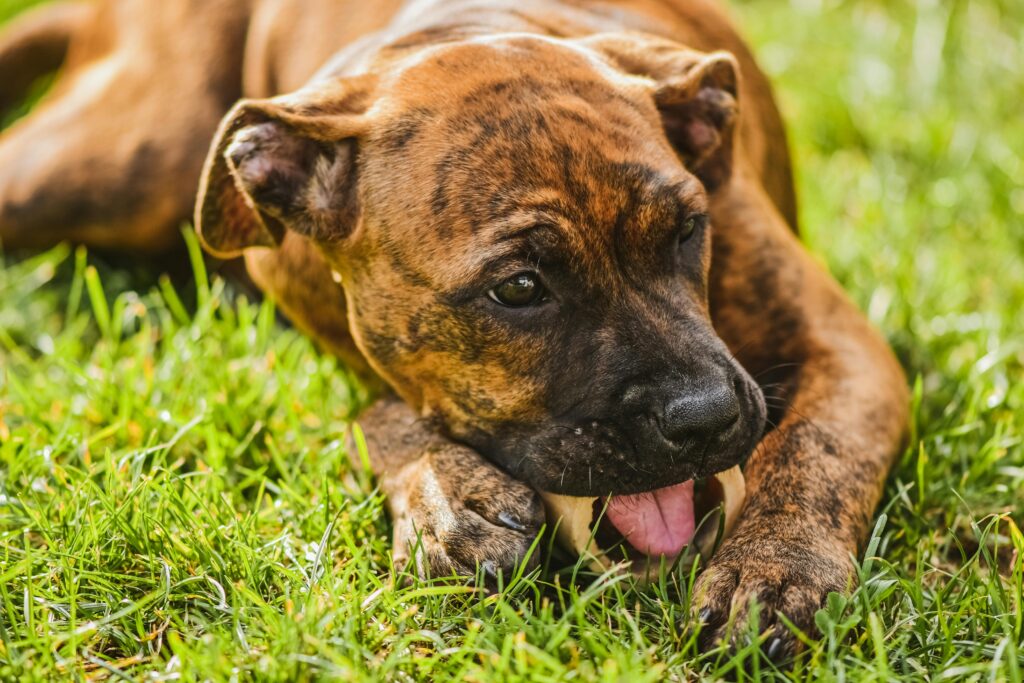
If you’ve ever found yourself pulling your puppy away from patches of grass during your daily strolls, you’re not alone. Many puppies seem obsessed with munching on grass, even when they’re not hungry. While it might seem harmless, you’re right to be cautious — it can be a messy (and sometimes risky) habit.
Let’s break down why puppies eat grass, when to worry, and how to stop your puppy from eating grass during walks — without turning every outing into a tug-of-war.
Why Do Puppies Eat Grass?
It’s surprisingly common for puppies and adult dogs alike to snack on grass. Here are a few reasons why it happens:
- Curiosity: Puppies explore the world with their mouths. Grass is just another texture and smell to investigate.
- Boredom or Lack of Stimulation: If walks are too slow or repetitive, your puppy may start nibbling grass as a way to entertain themselves.
- Mild Stomach Upset: Some dogs eat grass to induce vomiting when they have a stomachache — though not all grass eaters throw up.
- Nutritional Gaps: In some cases, dogs may be lacking fiber or specific nutrients and turn to grass instinctively.
- Habit: Sometimes, it’s just a learned behavior that becomes routine.
While the behavior is generally harmless, eating large amounts of grass — especially treated with pesticides — can lead to digestive issues.
When Should You Be Concerned?
If your puppy occasionally eats a blade or two, it’s usually not serious. But watch out for these warning signs:
- Vomiting frequently after eating grass
- Signs of stomach pain or refusal to eat regular food
- Diarrhea or lethargy
- Grass sprayed with chemicals or fertilizers in the area
If you notice any of the above, it’s time to consult your vet.
How to Stop Your Puppy from Eating Grass During Walks
Now let’s talk about how you can gently correct the behavior and keep your puppy focused on the walk — and off the lawn buffet.
1. Bring High-Value Treats on Walks 🍖
Arm yourself with tasty, small training treats that your puppy loves. When they walk beside you without diving into the grass, reward them! Positive reinforcement works better than pulling the leash or scolding.
As soon as they start to dip their head toward the grass, use a firm but friendly “leave it” command. When they obey, give them a treat and praise.
2. Teach the “Leave It” Command Early
The “leave it” cue is essential, not just for grass but for all kinds of tempting things like trash or dropped food. Practice at home by holding a treat in your hand, saying “leave it,” and only rewarding your puppy when they stop trying to get it. Then take the skill to your walks.
Consistency is key — use the same tone and timing every time.
3. Keep Your Puppy Engaged with the Walk
Many puppies eat grass out of boredom. Keep your walks interesting by changing your route, walking at a brisk pace, and occasionally stopping for training games or a sniff break in a controlled area.
Use different textures — sidewalks, trails, gravel paths — to stimulate their senses in healthier ways.
4. Use a Shorter Leash for Better Control
A long leash gives your puppy more freedom, which also means more opportunities to sneak a snack. Use a shorter leash or keep it slightly taut during areas with lots of grass. This helps you redirect them faster and guide them away before they dive in.
5. Offer Safe Chews at Home
Sometimes puppies look for things to chew during walks because they didn’t get enough chewing time at home. Make sure your puppy has access to safe chew toys like bully sticks, frozen carrots, or puppy teething bones. A satisfied chewer is less likely to look for grass.
6. Feed a Well-Balanced Diet
Check with your vet to ensure your puppy’s food meets all their nutritional needs. Sometimes eating grass is a response to a dietary imbalance — especially if they’re not getting enough fiber or natural greens.
You can ask your vet if it’s okay to add cooked pumpkin or dog-safe greens like spinach to their meals in moderation.
7. Be Patient and Consistent
Breaking a grass-eating habit takes time. Avoid getting frustrated or yanking the leash. Puppies respond best to calm, repetitive cues and lots of positive feedback.
If your puppy tries to eat grass during every walk, stay patient. Over a few weeks, with the right combination of redirection, training, and treats, the behavior will likely fade.
When It’s Time for Help
If your puppy’s grass-eating feels obsessive or is paired with other odd behaviors (like constant licking, pacing, or repeated vomiting), it might be time to consult a vet or a certified dog trainer.
Behavioral issues, especially those tied to anxiety or diet, are best addressed early.
Conclusion
Learning how to stop your puppy from eating grass during walks can make your daily routines safer, cleaner, and more enjoyable. With patience, redirection, and the right treats in your pocket, your puppy will soon learn that the grass isn’t always greener — or tastier — on the other side of the sidewalk. 🐾🌱
Let the walks be fun, focused, and free of grassy detours! Petsdogpuppy
